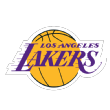How can Patrick Beverley help the Los Angeles Lakers?
Breaking a dry spell of nearly two months in terms of NBA trades, dating to when Beverley went from the Minnesota Timberwolves to the Utah Jazz as part of the historic package for Rudy Gobert, ESPN’s Adrian Wojnarowski reported Wednesday night that the Jazz are expected to finalize a deal sending Beverley to the Lakers for Talen Horton-Tucker and Stanley Johnson.
On Thursday, it became official.
After playing four seasons with the Lakers’ fellow Crypto.com Arena tenants, the Clippers, Beverley has changed teams frequently the past two summers. He was dealt twice last summer before landing in Minnesota and will now have been part of Utah’s roster for an extended period without ever actually representing the Jazz.
At 34, Beverley is at the tail end of his overachieving NBA career, but he showed with the Timberwolves last season that he can still make an impact on a playoff team as a starter. Let’s take a look at how Beverley fits with the Lakers and what the Jazz are getting out of this swap, which does not include any draft picks.
 Los Angeles Lakers: A
Los Angeles Lakers: A
The problems with the 2021-22 Lakers were myriad, including the health of stars Anthony Davis and LeBron James and their fit with new teammate Russell Westbrook. More than anything, though, the Lakers’ season was doomed because of a roster problem: they simply didn’t have enough players who were capable at both ends of the court, forcing former coach Frank Vogel to choose between prioritizing offense and defense in filling out lineups.
Enter Beverley, who has been one of the league’s better two-way role players throughout his career. A three-time All-Defensive pick, most recently in 2019-20, Beverley is a dogged if occasionally overexuberant on-ball defender. He’s an upgrade in that role from Avery Bradley, who started 45 games for the Lakers last season but remains unsigned a month before training camps begin.
Although Bradley has enjoyed a stronger defensive reputation among opposing players, he has rarely rated well in terms of his impact on team defense. Using three-year luck-adjusted RAPM from NBAshotcharts.com, which accounts for teammates and opposing lineups, Beverley has had far more positive defensive impact (plus-1.2 points per 100 possessions) than Bradley (minus-0.8, suggesting his teams have been weaker defensively with him on the court).
It’s possible, even likely, that Beverley’s RAPM overstates his influence. His tendency to foul his teams into the bonus sometimes leads to worse defense when Beverley is on the bench, as offenses tend to be far more efficient when in the bonus. Still, Beverley is undoubtedly a positive defender and a better perimeter one than any Lakers player last season.
At the other end of the court, Beverley knows his limitations and plays within them. He’s a low-usage scorer (last year’s 16% of his team’s plays finished by Beverley while on the court was his highest in a full season since 2014-15; league average is 20%) who can knock down open jumpers. While Beverley made just 34% of his 3s last season, he’s a 38% career 3-point shooter who can also offer some supplemental ballhandling to take that pressure off of LeBron.
All told, Beverley is precisely the kind of role player you want surrounding Davis and James, and at a reasonable price ($13 million on a one-year extension signed in Minnesota). Swapping Beverley for Horton-Tucker and Johnson will add modestly to the Lakers’ payroll. Assuming the Lakers fill the open roster spot with a player making the veteran minimum, they’ll increase their team salary by about $2 million and their luxury-tax bill by $7 million. That’s the kind of investment necessary to give their stars a credible supporting cast, particularly in the wake of LeBron’s decision to commit to the Lakers beyond this season with a contract extension struck last week.
Alas, there’s still a bigger question about the Lakers’ roster, and dealing for Beverley seems to make it all the more likely Westbrook begins the season elsewhere given their very public and very long-running feud. It dates back at least to when Westbrook suffered a season-ending meniscus tear in the 2013 playoffs in a collision with Beverley while trying to call a timeout.
We’ll see how the Westbrook trade market plays out, particularly with the Lakers retaining both future first-round picks they have the ability to trade (in 2027 and 2029). Either way, this roster is better off with Beverley, both now and next summer.
Quietly, this move also has the benefit of shedding Horton-Tucker’s $11 million player option for 2023-24, leaving the Lakers with just LeBron and AD under contract for more than $2.6 million beyond this season. That gives the Lakers the ability to create $30 million-plus in cap space next summer if they either let Westbrook’s contract play out or deal him for other players entering the final seasons of their contracts.
It’s not at all clear right now that using cap space next summer will be the right play for the Lakers. Signing a single player would continue the depth issues that plagued them last season. Still, by definition Horton-Tucker’s player option would be a loss for the Lakers.
If Horton-Tucker played well this season, he would opt out and look for a bigger contract. If not, Horton-Tucker would be on the books for more than he is worth. So moving him is also part of the value of this trade, making it a huge win for the Lakers.
 Utah Jazz: C
Utah Jazz: C
On one level, this trade makes a lot of sense for the Jazz. Utah was always likely to be a waystation for Beverley, who doesn’t fit with the Jazz whether they’re still trying to compete this season or plan to trade Donovan Mitchell and enter a full rebuilding process. Utah was already flush with guards, making Beverley unnecessary in the former scenario. In the latter, keeping a veteran with trade value makes no sense.
Horton-Tucker could be more of a long-term fit with the Jazz. His skill set never entirely made sense for the Lakers, who needed Beverley-type role players around their stars. Horton-Tucker’s best skill, shot creation, was redundant when playing with LeBron and AD. That role highlighted Horton-Tucker’s single biggest weakness, jump shooting. He’s a 28% career 3-point shooter.
Depending on what happens with Utah’s roster between now and the trade deadline, Horton-Tucker could have far more ability to operate with the ball in his hands. Horton-Tucker will have to improve in those situations as compared to last season.
In 2020-21, when he earned his current contract ahead of restricted free agency, Horton-Tucker shot an effective 51% on attempts with at least two seconds of touch time, per analysis of data from NBA Advanced Stats. That was substantially better than the league average of 48%. Last season, Horton-Tucker’s eFG% on those shots dropped to a below-average 46%.
Given Horton-Tucker’s ability to make plays for others (he averaged five assists per 36 minutes in 2020-21 before slipping to 3.8 last season) and play bigger than his 6-foot-4 height thanks to a wingspan measured at better than 7-foot-1 at the NBA draft combine, there’s a good player here if everything comes together.
Working in Horton-Tucker’s favor is his youth. He won’t turn 22 until November, making Horton-Tucker younger than 2022 lottery picks Keegan Murray and Ochai Agbaji.
The other perspective on the Jazz’s end of this trade is they should have had the leverage to get some draft compensation from the Lakers for making this swap. One of their precious first-round picks wasn’t realistic, but the Lakers actually have several second-round picks available.
Credit: Source link